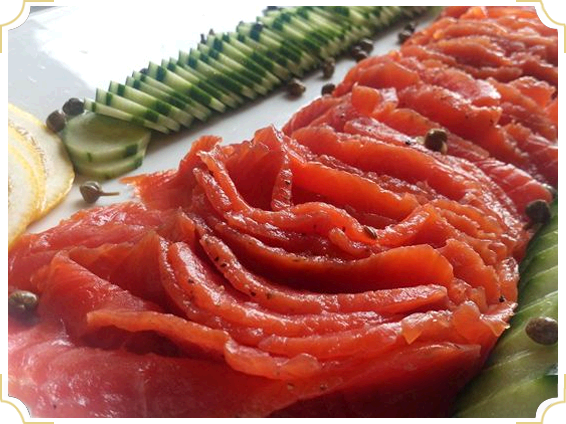GRAVE SALMON
We are incredibly grateful to have had such a wonderful salmon run this year on the west coast of BC. We were able to share some unique salmon dishes with new friends at several great venues we attended this fall. I’d like to challenge you to prepare a dish that is an absolute Scandinavian classic. Simple and easy to prepare, you can take advantage of this recipe and use it in your holiday arsenal, offering a lighter alternative to the usual suspects around the holidays.
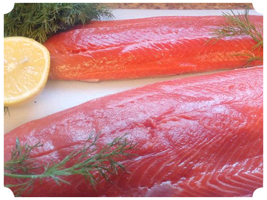
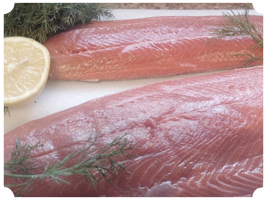
The name gravlax translates as “Grave-Salmon.” It refers to medieval time’s practice of curing the fish raw by burying it in the sand above the high tide.
We won’t be burying anything at the beach, we are going to use a cold curing technique with a mixture of salt, sugar and herbs. But it’s pretty cool to know the history behind the dish. Make sure all your dishes and utensils are clean and ready to go. I will be wearing gloves for this one, as there is no cooking method taking place and even though the salt and sugar will prevent things from going anaerobic, I’m not taking any chances. Also depending on the grade of your salmon and freshness, I recommend if it’s not sushi grade or the freshness is unknown, to freeze for up to seven days at a temperature of at least -23 C in order kill any little microbes around.
First: Use two sides of salmon fillets, skin on, rinsed and pin bones out. Depending on the thickness of your fillets you may opt to butterfly them, by cutting them evenly in half from the back towards the belly three quarters of the way through and then simply folding open.
Second: I’m using a large container that is totally flat on the inside. It is large enough to completely hold the salmon lying flat, this is important for even curing.
Third: Create your mixture of salt, sugar, pepper, dill seed and fresh dill. This will be your cure. For this cure, I’m doing two parts sugar to one part salt.
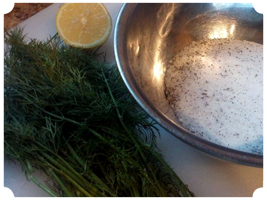
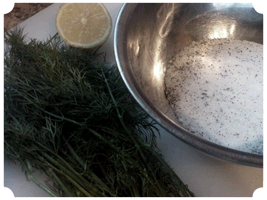
With the two fillets I’m using, the recipe is:
- One cup white sugar
- Half cup sea salt
- One tablespoon ground black pepper
- One tablespoon dill seed
- Two bunches of fresh dill (leave separate from the sugar/salt mixture)
Fourth: Evenly distribute approx 1/3 of the cure mixture and fresh dill to the inside of the container, and be very liberal with the fresh dill leaving it coarse (just tear it) all over the bottom of the container. Then gently lay the salmon skin side down over the cure. Proceed to distribute the remaining cure over the top of each of the fillets flesh. Cover coarsely once more with dill.
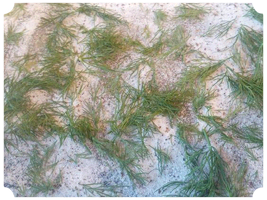
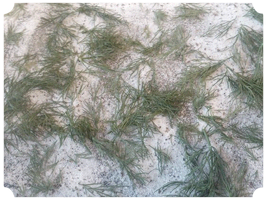
Note. You’ll notice right away that the salt and sugar start to draw moisture out of the salmon and is pooling in your container, this totally normal do not drain this liquid off. Note. If needed, stack the salmon flesh to flesh, like a sandwich if your container isn’t large enough to fit the fillets side by side.
Fifth: Cover salmon with plastic wrap. Place a plate or additional container as large as the salmon fillets but smaller in size to the base container. Place top container or plate atop the plastic wrapped salmon and use canned goods as weights to weigh down the salmon gently. Set in fridge for three to seven days, twice a day with gloves or clean utensils flip the fillets over allowing them to cure evenly and properly. Make sure you properly weigh down the salmon each time you flip the fillets.
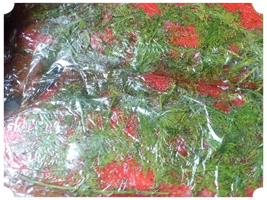
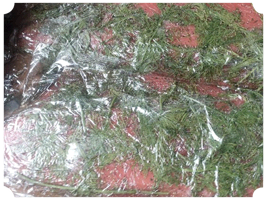
Sixth: After marinating/curing has taken place for several days, remove from container and scrape off the fresh dill and pat the fillets dry with a clean cloth or paper towel. On a slight bias thinly slice the fillets with a sharp knife as needed. Remove the skin as you go by flattening the blade and pulling the salmon away from the skin, leaving the skin intact. Serve with fresh dill, capers and crème fraiche on any form of vessel you can think of, from bagels, crackers to more traditional formats like blinis and rye breads, at this point the anticipation is intense and you’re just looking for a delivery system!
So have fun, give it a try!
